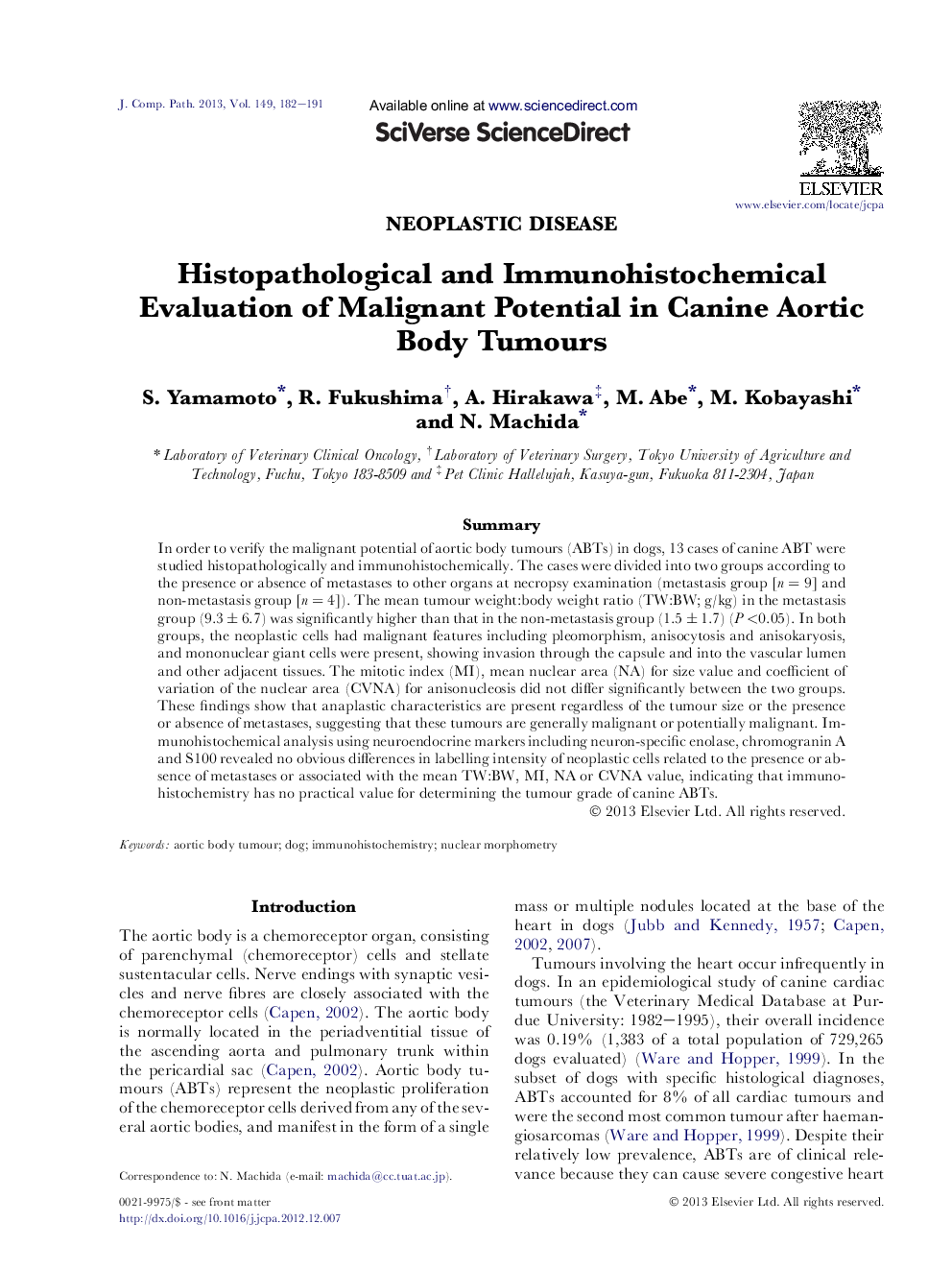| Article ID | Journal | Published Year | Pages | File Type |
|---|---|---|---|---|
| 2437405 | Journal of Comparative Pathology | 2013 | 10 Pages |
SummaryIn order to verify the malignant potential of aortic body tumours (ABTs) in dogs, 13 cases of canine ABT were studied histopathologically and immunohistochemically. The cases were divided into two groups according to the presence or absence of metastases to other organs at necropsy examination (metastasis group [n = 9] and non-metastasis group [n = 4]). The mean tumour weight:body weight ratio (TW:BW; g/kg) in the metastasis group (9.3 ± 6.7) was significantly higher than that in the non-metastasis group (1.5 ± 1.7) (P <0.05). In both groups, the neoplastic cells had malignant features including pleomorphism, anisocytosis and anisokaryosis, and mononuclear giant cells were present, showing invasion through the capsule and into the vascular lumen and other adjacent tissues. The mitotic index (MI), mean nuclear area (NA) for size value and coefficient of variation of the nuclear area (CVNA) for anisonucleosis did not differ significantly between the two groups. These findings show that anaplastic characteristics are present regardless of the tumour size or the presence or absence of metastases, suggesting that these tumours are generally malignant or potentially malignant. Immunohistochemical analysis using neuroendocrine markers including neuron-specific enolase, chromogranin A and S100 revealed no obvious differences in labelling intensity of neoplastic cells related to the presence or absence of metastases or associated with the mean TW:BW, MI, NA or CVNA value, indicating that immunohistochemistry has no practical value for determining the tumour grade of canine ABTs.
